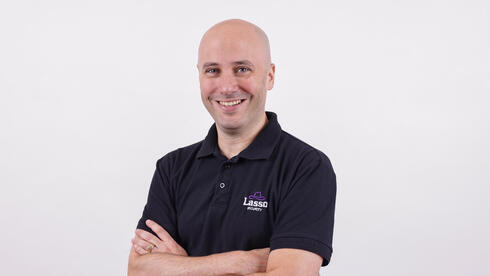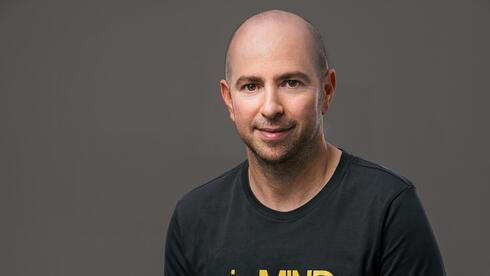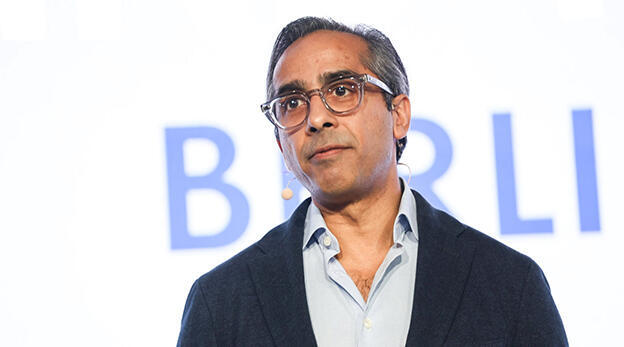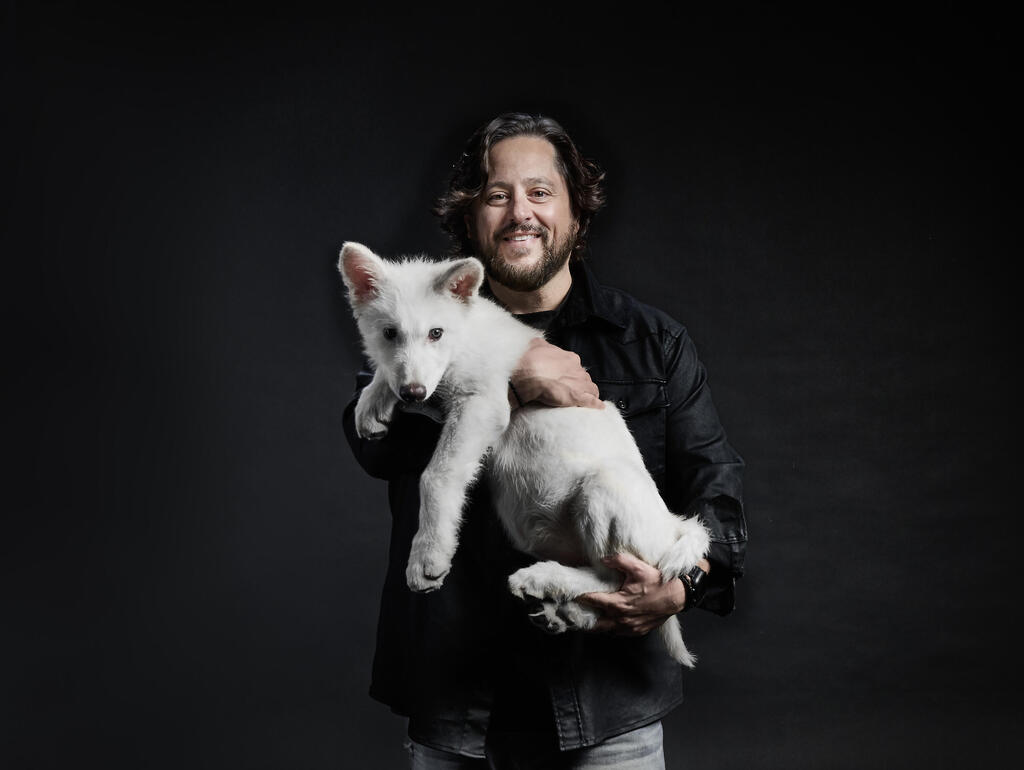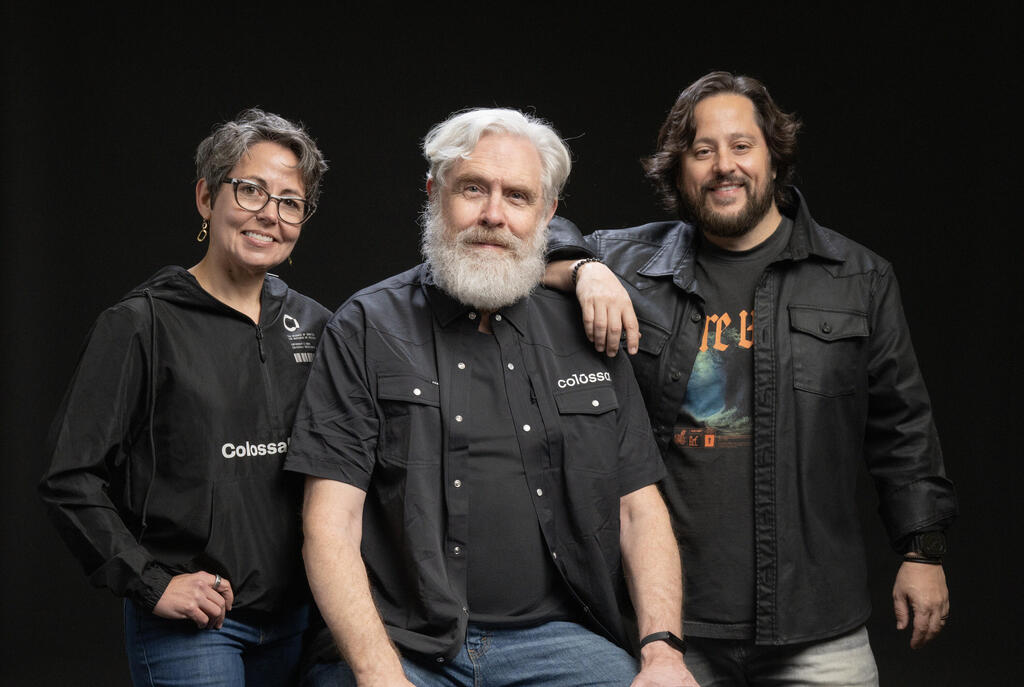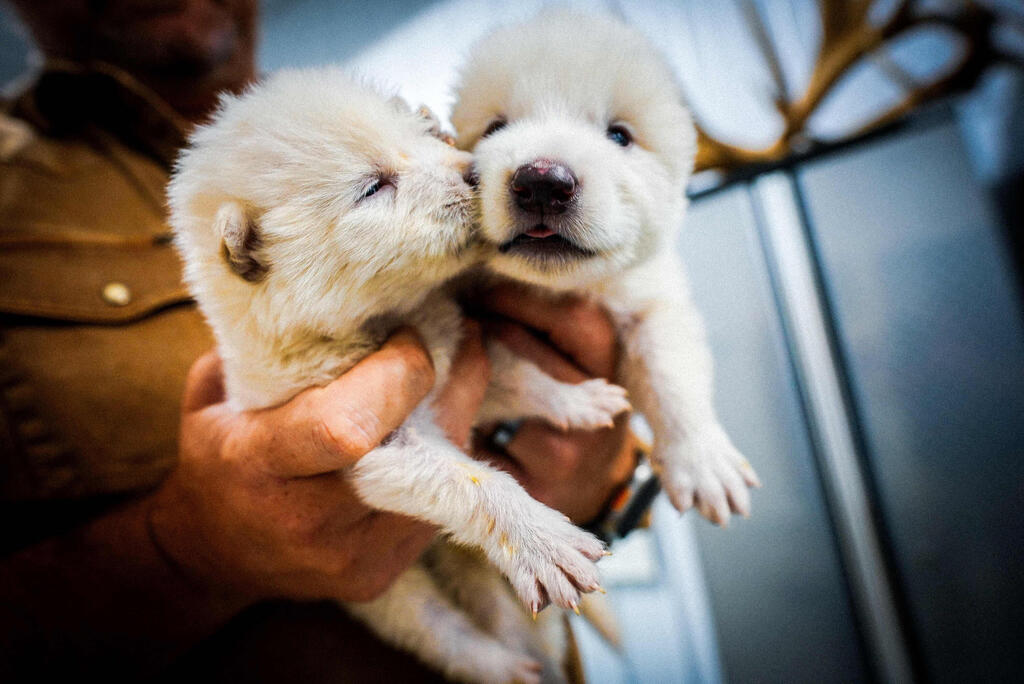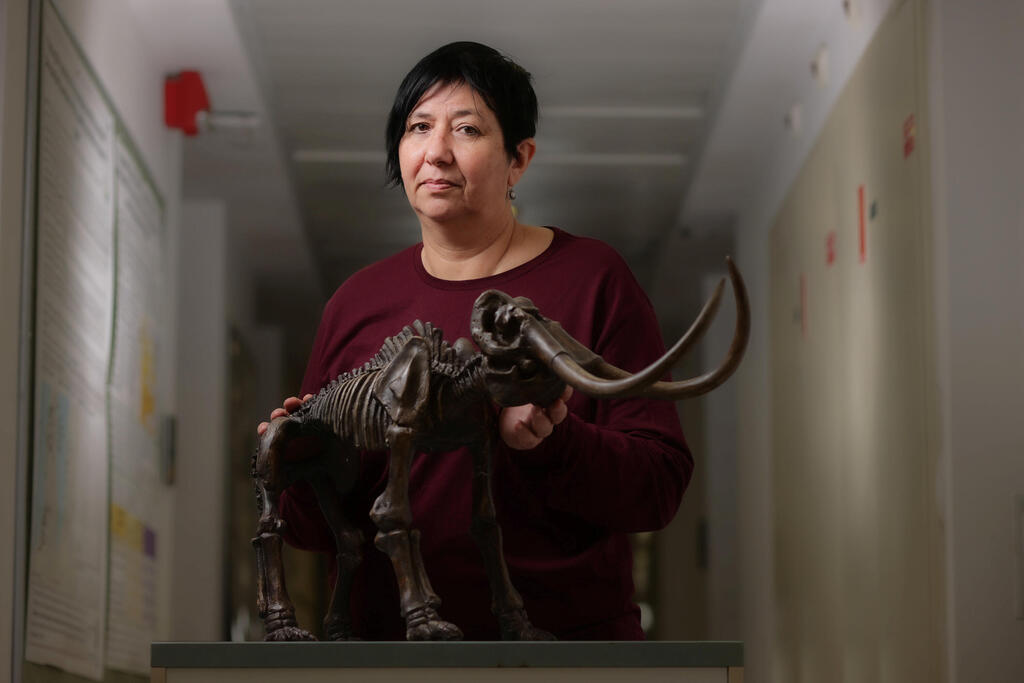
"We took a 73,000-year-old fossil and created puppies from it. It's just magic"
Biotech venture Colossal Biosciences stunned the world in April with the announcement that it had genetically engineered the dire wolf, a species that went extinct 12,500 years ago. But the excitement over the birth of three white puppies was quickly tempered by criticism: skeptics argued this was not a true species revival and warned that such investments could divert attention and resources from the urgent effort to protect existing wildlife. In an exclusive interview, founder Ben Lamm explains how the complex process was achieved, and why he believes it could ultimately benefit the planet.
On April 7th, something big happened. Newspaper headlines around the world announced that the dire wolf had been resurrected. The white wolf, which captured the imagination of tens of millions of viewers on Game of Thrones, the star of a Grateful Dead song, computer games, and several science fiction books, went extinct 12,500 years ago. However, the biotech startup Colossal Biosciences managed to create three healthy pups in its laboratories, named Remus, Romulus, and Khaleesi, using genetic engineering and fossil samples, a 13,000-year-old tooth and a 72,000-year-old skull. And it wasn't just the dire wolf that had returned. Along with the announcement of the three pups, Colossal also announced the birth of four red wolves, the most critically endangered canine species.
The field in which Colossal operates is called functional de-extinction, a kind of revival of an ancient species in which a hybrid is created, whose genome consists of the DNA of an extinct species combined with the DNA of a closely related modern animal, so that it expresses the traits that distinguish the extinct species from its donor. "Our vision is to identify the genes at the core of extinct animals, the ones that make them what they are, and thus engineer the species to return it to today's reality," says the company's founder and CEO Ben Lamm in an exclusive interview with Calcalist. In the case of the dire wolf, the key traits were white fur, tall stature, and distinct size.
The last time an attempt was made to de-extinct a species was in 2003, when, after many efforts, the Pyrenean ibex was cloned using DNA taken from its last individual, which had died three years earlier. However, the cloned ibex died shortly after birth due to a health defect. In contrast, Remus and Romulus were already six months old when they were introduced to the world and weighed 40 kilos.
However, the publication was quickly followed by a backlash, with some scientists demanding that the enthusiasm be tempered and that the facts be set straight. Their main argument was that this was not the resuscitation of a dire wolf, but a gray wolf (a common species) "in disguise." This is because the puppies' genome is based on the gray wolf, with the exception of 20 edits made to 14 genes out of more than two million.
“It’s a semantic argument,” says Professor Beth Shapiro, Colossal’s chief scientist. “Of course our dire wolf is not 100% genetically identical to any wolf that has ever lived, but that was not our goal. According to the IUCN guidelines, successful de-extinction involves producing an individual that embodies some of the traits of the extinct species, which we clearly did.”
"You also have to understand that dire wolves are not some weird kind of octopus," adds Lamm. "Gray wolves and dire wolves share 99.5% of their DNA. So from a body plan perspective, etc., they are very similar. But people didn't know what their fur looked like, or what color it was, because none of that was preserved. So we did a monumental service to science, and it works."
"People can argue with us about what the scientific name of our wolf should be, whether it's 'Colossal's dire wolf' or 'the cutest wolf I've ever seen.' We’re pretty indefferent. This argument belittles the science behind taking a 73,000-year-old skull and making puppies out of it, which is just magic. And it's interesting that people have just assume the magic."
Does that upset you?
"No, because the debate within the small sector of the scientific community about our project has only made it even more popular. If people want to argue what they call them (Romulus, Remus and Khaleesi), that’s just great for us, because it will only draw more and more attention to our company, which will lead to more fundraising, more investments, and more opportunities for us to de-extinct more animals, and also contribute more to conservation. The small group that wants to despise us and argue about how to classify this animal is only helping us, and I'm sure the species on Earth are grateful for it."
Lamm is a serial entrepreneur, worth an estimated $3.7 billion, and has already had five exits in a variety of fields, from online learning to a marketing chatbot. Accordingly, a conversation with him sounds like a presentation to investors: he speaks at a fast pace, bluntly, and is eager to answer any argument. He founded Colossal in 2021 with Harvard University professor George Church, one of the world's leading and most important researchers in the field of gene editing.
What brought a serial entrepreneur to such an unconventional field as de-extinction? The answer is the coronavirus pandemic. In 2020, shortly after the outbreak, Lamm contracted the disease, and the forced break from his hectic work led him to reflect: Had the companies he founded and the money he earned created meaningful change in the world? He began to think about what solutions he could promote to help the environment, for example, in dealing with the climate crisis, and became interested in the ability of certain algae to absorb carbon through photosynthesis. At the time, Church was part of a team that used genetic engineering to edit the genome of blue-green algae so it could store carbon 20% more efficiently. Lamm picked up the phone, which led to a meeting in Boston, where he asked Church what projects he would focus on if he had unlimited funds at his disposal. From there, the road to Colossal was short.
Since its inception, the Dallas, Texas-based startup has raised $425 million in two rounds, including from high-profile investors such as Paris Hilton, movie star Chris Hemsworth, director Peter Jackson, and football star Tom Brady. It is now valued at $10.2 billion, slightly more than the market value of pharmaceutical giant Moderna.
The big challenge for the company in restoring extinct species is to revive the functional essence of the species while also meeting the guidelines of the International Union for Conservation of Nature (IUCN) and the Humane Society of the United States, and avoiding, as much as possible, the creation of animals that suffer from inherent health problems. “We are interested in the phenotype (observable traits, which are an expression of genes) of the animals, not the genotype (genetic makeup). And our goal is to create an animal that can slip into the ecosystem in the way its predecessors did,” says Shapiro. “So it was important to us to restore the light fur of the dire wolf, for example, but that was not as important as the route we took to get there.”
Colossal's de-extinction process begins with two dire wolf fossils: one a tooth found in Sheridan Pit, Ohio, and the other an inner ear bone found in American Falls, Idaho. In its labs, Colossal extracted and sequenced the ancient DNA, some of it reconstructed, and the rest completed using computational tools. They cross-referenced the assembled genome with those of extant canids (such as wolves, jackals, and foxes) to find the animal most genetically similar to the dire wolf, which would serve as a surrogate. The answer: a gray wolf.
“At this point we had to distill down the features, what in this genome makes the dire wolf unique compared to the gray wolf genome?” explains Shapiro. “There’s so much information about the gray wolf, which is probably the best-known and most misunderstood wild species out there, because domesticated dogs are actually gray wolves. So we have a huge amount of information about their genome, about veterinary protocols, about surrogacy, and a lot of other things that just don’t exist for other wild species. From the perspective of the IUCN guidelines, this is optimal, because the abundance of information allowed us to make sure that what we were doing was ethical and would lead to as little harm as possible, if any.”
Please give me an example.
"Our consideration in choosing the gene locations we wanted to edit was to make the fewest possible changes to create a visible change in the animal. We knew we wanted a wolf that was larger and more muscular than a gray wolf, and from the DNA sequencing we found that the two dire wolves we sequenced had light fur due to mutations in pigmentation genes that we know from research on other canine species.
"So first of all, we checked, if we make changes to these genes in the gray wolf, does the existing knowledge indicate that there will be a problem in its genetic background? We also know that there are dogs that have mutations in certain genes and also suffer from deafness or blindness. We knew that these were not the same mutations found in the dire wolves, but they are in the same genes. So if we make changes to these genes, there is a risk of negative health consequences. That's why we decided not to use these genes."
"We chose a total of 20 mutations in 14 genes, located in regulatory regions of the genome (regions in DNA that control when, where, and how many genes are expressed), so that they would have a broad phenotypic impact. We were very excited that we were able to accurately identify those 15 mutations from the dire wolf genome, and then we inserted them into the gray wolf genome."
Using artificial insemination, Colossal scientists implanted somatic cell nuclei (which are not gametes) into the eggs of a gray wolf, and after the embryos formed, they were returned to the donor wolf’s uterus for surrogacy. On October 1, 2024, the pregnancy ended with the birth of two cubs: Remus and Romulus. Colossal’s team had hoped for a normal birth, but as the pregnancy progressed, concerns grew about a “size mismatch”, that is, that the fetuses would be too large for the surrogate mother and would ultimately need to be delivered by cesarean section. “It was just amazing,” says Shapiro. “They had lighter fur, they were bigger, and they were more muscular, so we were able to recreate the three key characteristics of the dire wolf.”
Colossal's ambitions don't stop with the dire wolf. The first project the company worked on was to bring the woolly mammoth back to life, that is, to create a “mammophant,” a hybrid of a mammoth and an elephant. Two months ago, the company announced that it had succeeded in creating a genetically modified mouse with woolly mammoth characteristics, and now, says Lamm, "we are working very hard to have mammoth embryos edited by the end of 2026. If all goes well, they will emerge into the world after a 22-month gestation period", meaning the first woolly mammoth is set to be born in the second half of 2028. "Given the success of our editing, I think there's a good chance we'll see another species even before then, but we'll have to wait and see," he says.
The company is also working to de-extinct the dodo, a flightless bird that lived on the island of Mauritius and went extinct in the 17th century, as well as the Tasmanian tiger (also known as the thylacine), the largest marsupial predator in modern history, which lived in Australia and New Guinea and went extinct in the 20th century.
These projects, intriguing as they may be, raise an obvious question: Why do this at all? Who needs the mammoth to be resurrected, and what value is there in dire wolves living on an isolated farm, with no current plans to release them into the wild? Indeed, the harshest criticism directed at Colossal comes from those who fear that the allure of resurrecting extinct species could distract from the urgent need to protect those still at risk today.
U.S. Interior Secretary Doug Burgum posted on X: “Going forward, we must celebrate removals from the endangered list - not additions,” and the following day told his staff, “We have an opportunity to bring back extinct species. Just pick your favorite and call Colossal!”
Nobel Prize-winning chemist Jennifer Doudna, co-inventor of the gene-editing method CRISPR, has also warned against scientists “playing God,” stressing that gene editing should only be used in truly essential cases. In her 2017 book A Crack in Creation, she wrote: “If we can avoid interfering with nature any more than we already have, shouldn’t we try?”
Colossal argues that de-extinction offers numerous benefits for life on Earth. It can help restore biodiversity by reintroducing species that once played critical ecological roles, thereby aiding in the rehabilitation of environments degraded by human activity. It may also help address current environmental challenges such as climate change, drought, and disease. For example, the woolly mammoth, adapted to extreme cold, could help preserve Arctic permafrost and reduce greenhouse gas emissions. Furthermore, the genetic tools developed by Colossal could be applied to protecting endangered species, boosting their resilience to environmental changes and disease. The company also emphasizes its contributions to scientific understanding, offering fresh insights into evolution, physiology, and behavior.
Still, not everyone is convinced. “There’s a fairly broad consensus in the ecological community that de-extinction is not the right path to save the planet,” says Prof. Ariel Chipman, an expert in evolutionary and developmental biology at the Hebrew University. “Efforts should focus on preserving habitats and protecting existing species. The money being funneled into Colossal is classic ‘greenwashing’, very rich, high-profile individuals invest in Colossal so they can say, ‘Look how good I am, I’m helping save the planet.’ It would be far better if they donated to lower-profile conservation projects that are actually making a difference.”
“It’s not a zero-sum game,” Lamm responds. “That’s just not how the economy works. On the contrary, we’re bringing new technologies into conservation, and we give all the tools we develop away, for free, to 48 conservation organizations around the world. We also fund new research. In fact, last October we launched the Colossal Foundation, a nonprofit arm seeded with $50 million, designed to support endangered species conservation and apply advanced genetic technologies to restore biodiversity globally.”
“All the money we’ve raised comes from tech and private investors. We’re not dipping into government grants, or taking funds from the Gates Foundation that are earmarked for conservation. This is new capital. And if you ask some of our conservation partners, they’ll tell you that public interest in causes like elephant conservation has increased dramatically because of our work. We’re drawing attention to issues that really matter.”
How exactly?
“People have always talked about the dire wolf, but until a month ago, no one was talking about the most critically endangered canine, the red wolf. The week we launched the dire wolf project, over 400 unique articles were published about red wolf conservation, and Google searches for red wolves spiked by a factor of a thousand. Two weeks later, The Today Show, one of the most-watched programs in the U.S., aired a special, not about Colossal, not about de-extinction or the dire wolf, but about the red wolf. So the idea that de-extinction is harming conservation needs to be rethought. The ripple effects of what we’re doing are helping raise conservation awareness.”
While these projects raise awareness, they could certainly lead to reductions in government budgets for traditional conservation efforts. You've heard the statements from your Secretary of the Interior.
“We’ve met with Burgum and his team, and we’re in full agreement with them. His question is how to accelerate the recovery of species and remove them from the endangered species list once they’ve been fully restored. We’ve publicly expressed our support for the Endangered Species Act, emphasizing that it’s just one conservation tool, not a substitute for preserving land or ecosystems. Personally, I would love to see the red wolf removed from the endangered species list. And the only way to do that is to produce enough red wolves and release them into protected ecosystems where they can thrive.”
Is there even a habitat that can accommodate such reintroduced animals?
Could functional de-extinction become the ChatGPT of 2025, a breakthrough technology that enters our lives with great fanfare, sparks fear and apocalyptic visions, and within a few years is revealed to be complex and risky, but also indispensable? Or will we wake up in 2027 regretting the moment we contributed to the media hype around Colossal?
“We work with 17 of the world’s leading laboratories and 95 of the top scientific advisors globally, including a Nobel laureate, Professor Carolyn Bertozzi, the 2022 Nobel Prize winner in Chemistry, who serves as a scientific advisor to the company,” Lamm emphasizes. “Beth is herself a professor of ecology and evolutionary biology, and we have another 172 scientists working for us. So there’s a significant segment of the scientific community that agrees with our approach, otherwise, they wouldn’t be working with us.”
Lamm points to Colossal’s contribution to global elephant conservation as a prime example. “As part of our conservation work, we’re tackling elephant endotheliotropic herpesvirus (EEHV), the leading cause of death for captive elephants,” he says. “We know mammoths were also susceptible to this virus. So should we, in the process of bringing mammoths back, try to eradicate the virus, develop a vaccine or better understand the disease? Or should we take a purist approach and accept that mammoths, historically, were vulnerable to it? From both a conservation and animal welfare perspective, and as someone who wants to return these animals to the wild, I believe we should engineer immunity. We don’t want a fifth of our baby mammoths dying from a preventable virus, do we?”
“But in the wild, elephants don’t die from this virus,” counters Professor Gila Kahila Bar-Gal, an expert in molecular evolution and ancient DNA at the Hebrew University. “The main causes of death for African elephants are drought, lack of food and water, and habitat destruction. And we don’t even know if a viable habitat exists, especially in a sparsely populated Africa, that can support the hybrid species Colossal is planning. So what exactly are we achieving here? The debate over de-extinction is the same one we had after Dolly the sheep was cloned: Should we clone species to return them to the wild, or should we focus on preserving existing habitats and the species already living there? Habitat preservation is more important, because in the long term it supports more biodiversity without the need for human interference. And if an ecosystem collapses, maybe it collapses for a reason, or maybe it needs to collapse in order to regenerate. There have been six mass extinction events in Earth’s history, each wiping out countless species. After each one, new species evolved that were better suited to the new conditions.”
Kahila Bar-Gal also offers a policy perspective from her role on the board of European natural history museums. “Until about a year ago, the European Union prioritized biodiversity conservation very highly. But now it’s beginning to shift, partly because of the emergence of private companies in the space. The EU sees this and says, ‘Okay, maybe we can step back for a moment and reallocate our resources, these private companies are handling it.’ But is it really right to outsource the preservation of nature to private companies? What are the chances that they’ll prioritize their own interests over the global good?”
So are you against Colossal?
“I don’t see only negative outcomes from their scientific work. What they’re doing can contribute scientifically, and perhaps we can apply their technologies to equally important goals, like increasing reproduction in critically endangered species with very few remaining individuals. But from a conservation standpoint, I worry their activities could lead to a dangerous mindset. Some may begin to think: ‘If we lack the resources to protect this habitat or the species within it, maybe we can just give up, Colossal will create a new deer for us.’ Is it really acceptable for the Nature and Parks Authority to stop protecting the Israel deer based on the assumption that, at worst, someone will engineer a replacement?”




